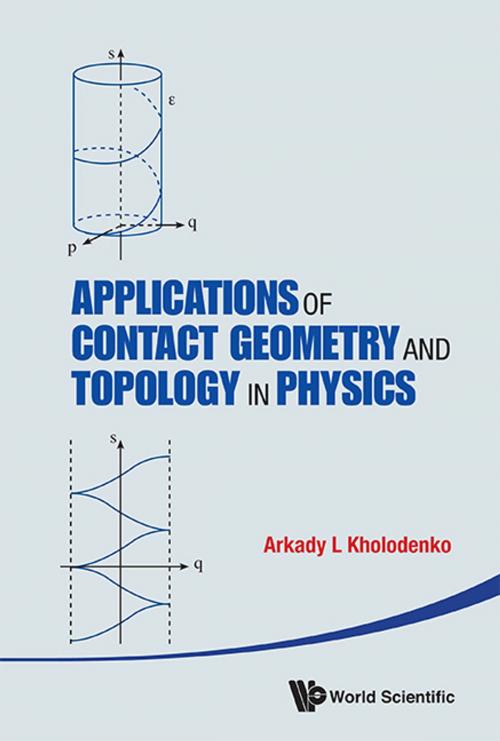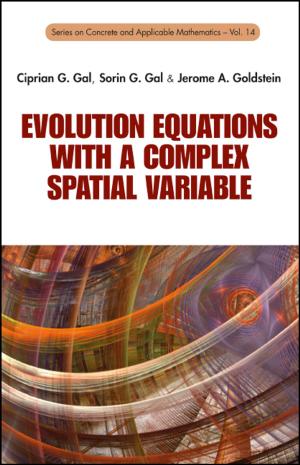Applications of Contact Geometry and Topology in Physics
Nonfiction, Science & Nature, Mathematics, Topology, Geometry| Author: | Arkady L Kholodenko | ISBN: | 9789814412100 |
| Publisher: | World Scientific Publishing Company | Publication: | May 3, 2013 |
| Imprint: | WSPC | Language: | English |
| Author: | Arkady L Kholodenko |
| ISBN: | 9789814412100 |
| Publisher: | World Scientific Publishing Company |
| Publication: | May 3, 2013 |
| Imprint: | WSPC |
| Language: | English |
Although contact geometry and topology is briefly discussed in V I Arnol'd's book “Mathematical Methods of Classical Mechanics ”(Springer-Verlag, 1989, 2nd edition), it still remains a domain of research in pure mathematics, e.g. see the recent monograph by H Geiges “An Introduction to Contact Topology” (Cambridge U Press, 2008). Some attempts to use contact geometry in physics were made in the monograph “Contact Geometry and Nonlinear Differential Equations” (Cambridge U Press, 2007). Unfortunately, even the excellent style of this monograph is not sufficient to attract the attention of the physics community to this type of problems. This book is the first serious attempt to change the existing status quo. In it we demonstrate that, in fact, all branches of theoretical physics can be rewritten in the language of contact geometry and topology: from mechanics, thermodynamics and electrodynamics to optics, gauge fields and gravity; from physics of liquid crystals to quantum mechanics and quantum computers, etc. The book is written in the style of famous Landau–Lifshitz (L–L) multivolume course in theoretical physics. This means that its readers are expected to have solid background in theoretical physics (at least at the level of the L–L course). No prior knowledge of specialized mathematics is required. All needed new mathematics is given in the context of discussed physical problems. As in the L–L course some problems/exercises are formulated along the way and, again as in the L–L course, these are always supplemented by either solutions or by hints (with exact references). Unlike the L–L course, though, some definitions, theorems, and remarks are also presented. This is done with the purpose of stimulating the interest of our readers in deeper study of subject matters discussed in the text.
Contents:
-
Motivation and Background
-
From Ideal Magnetohydrodynamics to String and Knot Theory
-
All About and Around Woltjer's Theorem
-
Topologically Massive Gauge Theories and Force-Free Fields
-
Contact Geometry and Physics
-
Sub-Riemannian Geometry, Heisenberg Manifolds and Quantum Mechanics of Landau Levels
-
Abrikosov Lattices, TGB Phases in Liquid Crystals and Heisenberg Group
-
Sub-Riemannian Geometry, Spin Dynamics and Quantum-Classical Optimal Control
-
From Contact Geometry to Contact Topology
-
Closing Remarks:
- The Unreasonable Effectivenessof Contact Geometry and Topology in Physical Sciences
-
Appendices:
- Heisenberg Group in the Context of Sub-Riemannian Geometry and Optimal Control
- Sub-Riemannian Dynamics of Josephson Junctions
- Quantum Computers and Quantum Random Walks
- The Measurement Protocol. Geometry and Topology of Entanglements
Readership: Students in applied mathematics and theoretical physics.
Key Features:
- This book is the world's first book on contact/sub-Riemannian geometry and topology for physicists
- Unlike books discussing mathematical methods for physicists, this book discusses physical problems first and only then uses new mathematics to solve these problems. Problems are selected from practically all branches of theoretical physics
- This is done with the purpose of demonstrating that contact geometry should be looked upon as a universal language/technical tool of theoretical physics
Although contact geometry and topology is briefly discussed in V I Arnol'd's book “Mathematical Methods of Classical Mechanics ”(Springer-Verlag, 1989, 2nd edition), it still remains a domain of research in pure mathematics, e.g. see the recent monograph by H Geiges “An Introduction to Contact Topology” (Cambridge U Press, 2008). Some attempts to use contact geometry in physics were made in the monograph “Contact Geometry and Nonlinear Differential Equations” (Cambridge U Press, 2007). Unfortunately, even the excellent style of this monograph is not sufficient to attract the attention of the physics community to this type of problems. This book is the first serious attempt to change the existing status quo. In it we demonstrate that, in fact, all branches of theoretical physics can be rewritten in the language of contact geometry and topology: from mechanics, thermodynamics and electrodynamics to optics, gauge fields and gravity; from physics of liquid crystals to quantum mechanics and quantum computers, etc. The book is written in the style of famous Landau–Lifshitz (L–L) multivolume course in theoretical physics. This means that its readers are expected to have solid background in theoretical physics (at least at the level of the L–L course). No prior knowledge of specialized mathematics is required. All needed new mathematics is given in the context of discussed physical problems. As in the L–L course some problems/exercises are formulated along the way and, again as in the L–L course, these are always supplemented by either solutions or by hints (with exact references). Unlike the L–L course, though, some definitions, theorems, and remarks are also presented. This is done with the purpose of stimulating the interest of our readers in deeper study of subject matters discussed in the text.
Contents:
-
Motivation and Background
-
From Ideal Magnetohydrodynamics to String and Knot Theory
-
All About and Around Woltjer's Theorem
-
Topologically Massive Gauge Theories and Force-Free Fields
-
Contact Geometry and Physics
-
Sub-Riemannian Geometry, Heisenberg Manifolds and Quantum Mechanics of Landau Levels
-
Abrikosov Lattices, TGB Phases in Liquid Crystals and Heisenberg Group
-
Sub-Riemannian Geometry, Spin Dynamics and Quantum-Classical Optimal Control
-
From Contact Geometry to Contact Topology
-
Closing Remarks:
- The Unreasonable Effectivenessof Contact Geometry and Topology in Physical Sciences
-
Appendices:
- Heisenberg Group in the Context of Sub-Riemannian Geometry and Optimal Control
- Sub-Riemannian Dynamics of Josephson Junctions
- Quantum Computers and Quantum Random Walks
- The Measurement Protocol. Geometry and Topology of Entanglements
Readership: Students in applied mathematics and theoretical physics.
Key Features:
- This book is the world's first book on contact/sub-Riemannian geometry and topology for physicists
- Unlike books discussing mathematical methods for physicists, this book discusses physical problems first and only then uses new mathematics to solve these problems. Problems are selected from practically all branches of theoretical physics
- This is done with the purpose of demonstrating that contact geometry should be looked upon as a universal language/technical tool of theoretical physics















